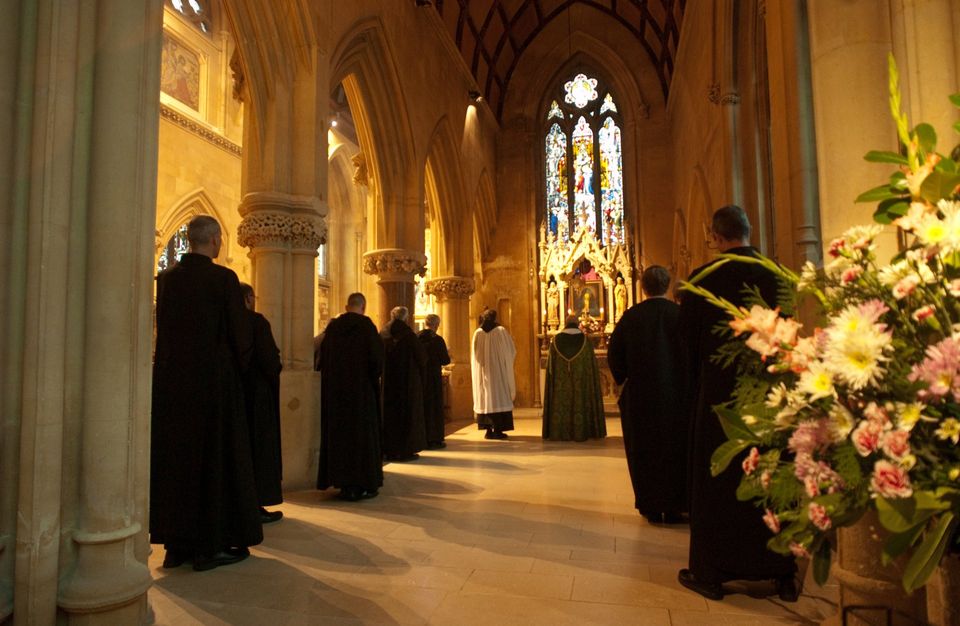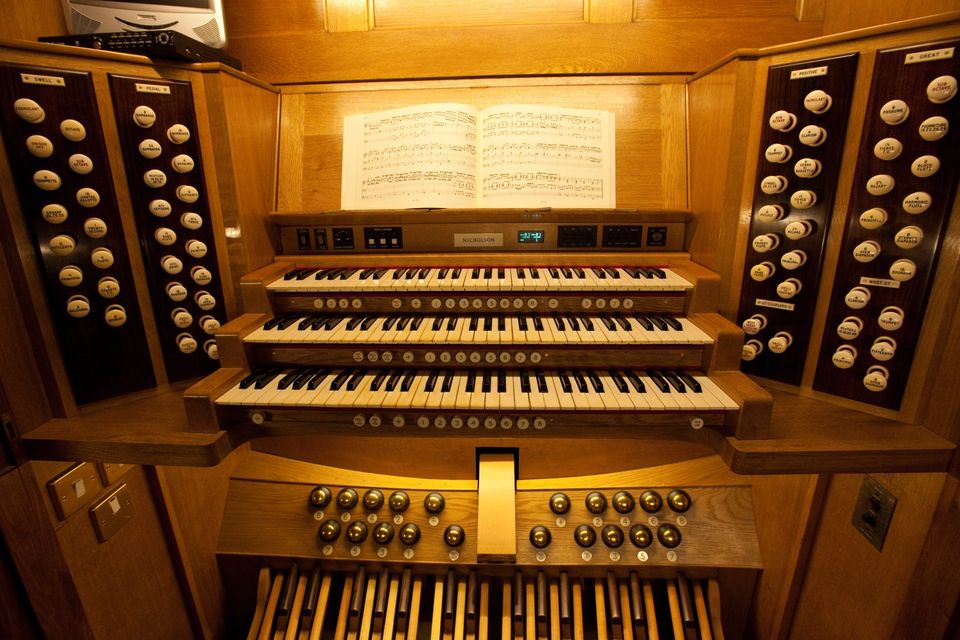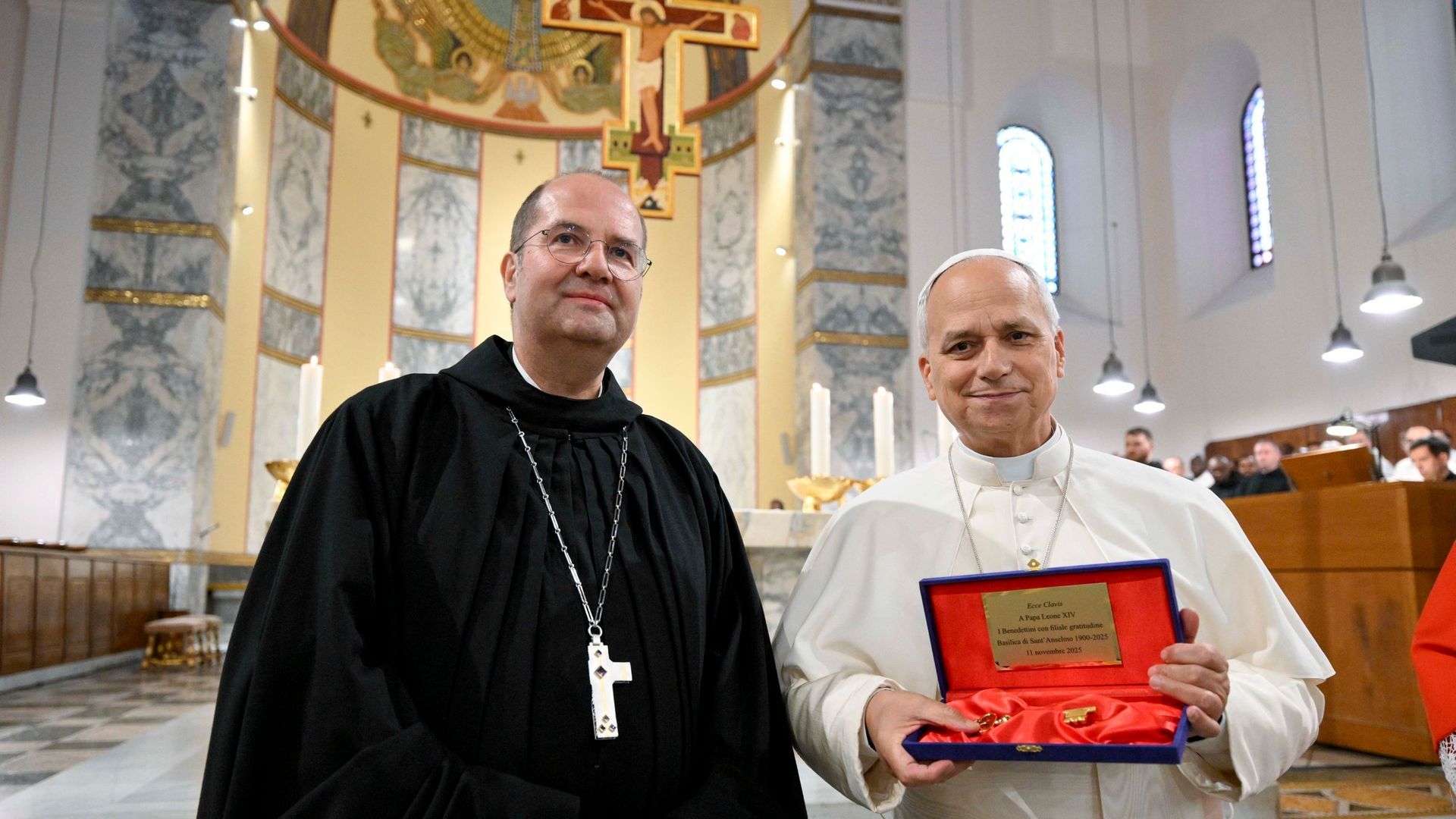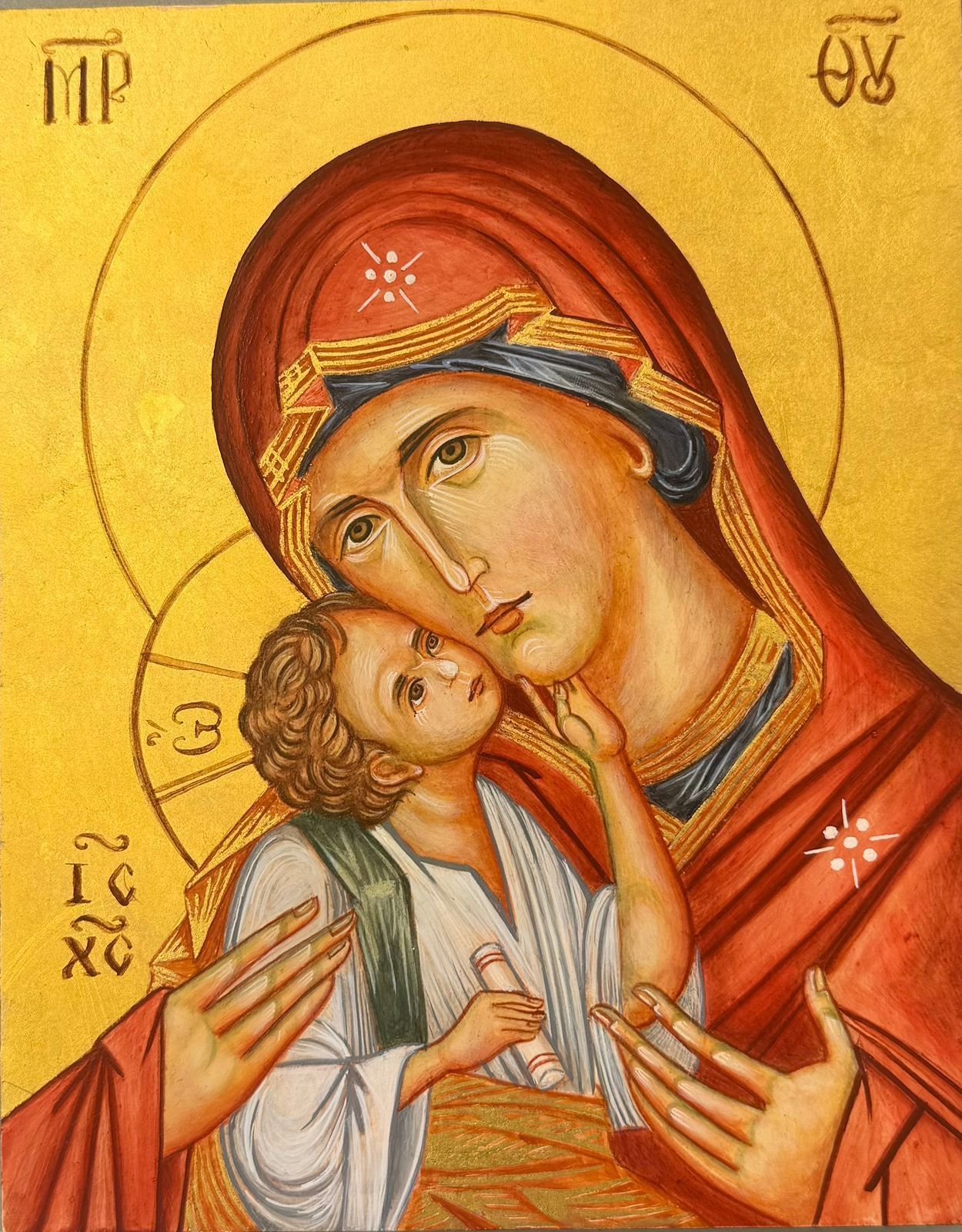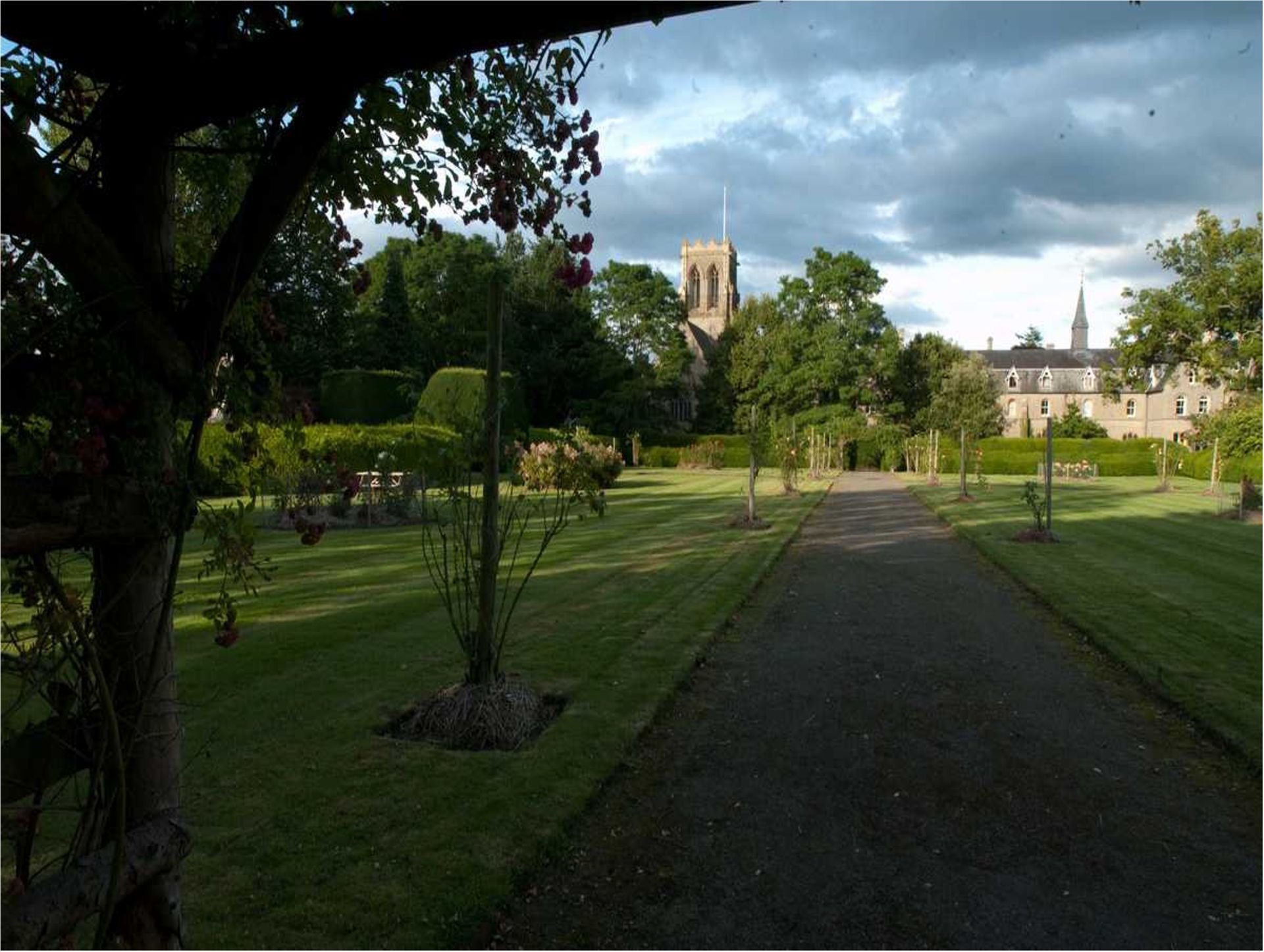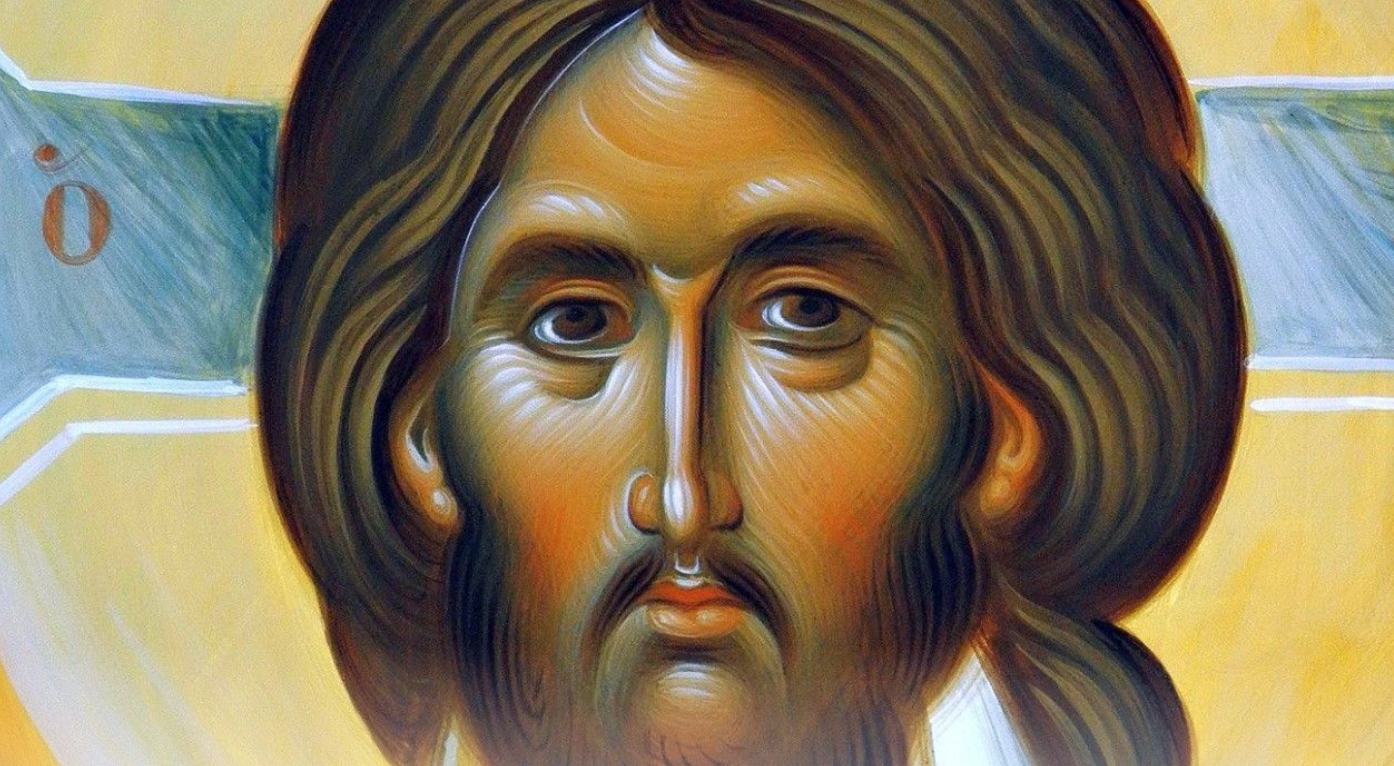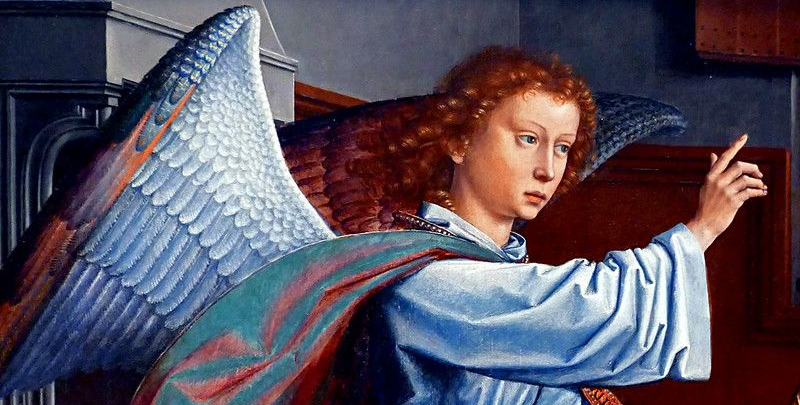Music at Belmont, ancient and modern
As a Cathedral Priory, Belmont was the only Cathedral in the Catholic Church where the Divine Office was sung daily. Abbot Paul writes about Belmont's role in the spread of Gregorian Chant in England and Wales.
You have only to look through the archives at Belmont to see that in 19th Century, and particularly in the 1850s, there was a great deal of correspondence and disagreement about the music to be sung by the monastic community and hence by the cathedral chapter in the church of St Michael and All Angels. As readers probably know, from 1859 until 1915, the church was the pro-cathedral of the Diocese of Newport and Menevia (from 1889 just Newport). The Archdiocese of Cardiff was created in 1915, really the work of Bishop John Cuthbert Hedley building on the foundations laid by Bishop Thomas Joseph Brown. St David’s church in Cardiff was chosen to be the cathedral, while the church at Belmont was to be the co-cathedral. For 5 years there were two chapters, Belmont retaining the monastic chapter. When Belmont became an abbey in 1920, this arrangement came to an end. It is interesting to note that between 1859 and 1920, Belmont was the only cathedral in the whole of the Catholic Church, where the full divine office was sung daily and sung by a community of Benedictine monks using only Gregorian chant.
But let us go back to the beginning. In order to celebrate his conversion to the Catholic Faith, Francis Richard Wegg-Prosser of Belmont House, Hereford, decided to build a church on his estate. For this he engaged the services of Edward Welby Pugin, who at the age of 18, had inherited his father’s business in 1852. As the magnificent building progressed, Wegg-Prosser realised that he would need a community of priests to service it. The Jesuits, who had had pastoral care of Herefordshire throughout penal times and were based at St Francis Xavier, Hereford, were not interested. Soon the project got to the ears of Bishop Brown, who had been hoping to build a cathedral church at Newport, at that time the largest town in South Wales, but neither the land nor the money were forthcoming. So he approached Wegg-Prosser on the possibility of taking on the church being built at Belmont to be his pro-cathedral and the English Benedictine Congregation (he was a monk of Downside) concerning the possible building of a monastery and the provision of a monastic chapter. Eventually in 1859, these plans came to fruition, but not without a bruising fight engaged in by all three parties. Bishop Brown was well-known for his pugnacious spirit.
The most interesting of the correspondence dates from 1856 and involved Bishop Brown, who constantly threatened to move the cathedral to Newport unless his demands were granted, Wegg-Prosser, who insisted on the singing of plainchant and eventually got his way, and Abbot President Placid Burchall of the EBC, elected in 1854 and who served as such for 29 years. The problem was that, while Wegg-Prosser insisted that only plainchant should be sung at Belmont, Bishop Brown opposed the prohibition of “figured music”. Brown immediately involved Burchall in the flight against an absolute prohibition. Burchall consulted with Rome, while Brown wrote to Wegg-Prosser that he ”would never have accepted his offer on such terms,” had they been made clear at the start. Burchall wrote to Wegg-Prosser, explaining that he would bring the matter up at General Chapter. Wegg-Prosser replied that he feared having to offer the church to another Order and formally requested the E.B.C that only plainchant be sung at Belmont. In the end both Brown and Burchall realised that it was Belmont or nothing and so they had no choice but to accept Wegg-Prosser’s restriction.
So it was that the chant came to be
sung at Belmont from the moment the building was handed over to Bishop Brown
and the English Benedictine Congregation on 21st November 1859. The
consecration of the church was being planned for September 4th 1860
and Cathedral Prior Norbert Sweeney invited Abbot Prosper Guéranger to sing the Mass on the occasion. That fact
alone gives some indication of the importance that Belmont was going to play,
not only in the gradual reform of the English Congregation, but also in the
diffusion of Gregorian Chant in England and Wales, as the monks and priests
formed at the Common Novitiate and House of Studies went back to their
monasteries or served on the many Benedictine parishes throughout the land.
There is in the archive a most beautifully written letter from Guéranger to the
Prior accepting the invitation and giving details of his arrival. It contains
the words, floreat ordo!
Whereas
we presume that the monks were faithful to Wegg-Prosser’s injunction,
especially as he lived just down the road, other music must have been played,
if not sung. The organ, which was built in 1870 by Bishop & Son of London,
was originally installed in the North Transept and removed in 1886 to its
present position in a chamber where it was encased in 1889. We know that Elgar
played the organ frequently and that his daughter, Carice, was confirmed by
Bishop Hedley at Belmont. However, it was probably not until the liturgical
changes that took place in the 1960s that “figured music” came to be sung
regularly at Belmont, at least by the parish and school. My own recollections,
on first visiting Belmont in 1962, are that only the chant was sung both at
Mass and for the Office. However, by the time I joined the community as a
postulant in 1969 things had changed dramatically.
In the 1960s two important events took place that marked the liturgy at Belmont. The first was the Second Vatican Council and the changes that it brought to the liturgy, particularly the introduction of the vernacular. The second was the rapid development of the school with the building of a new classroom and administrative block and new four boarding houses, which are still in use today, rented out to the NHS. The increase in the number of pupils gave rise to the desire to accommodate these in the church for Sunday Mass and other celebrations and the need to introduce singing in English. As in many other places, this involved the introduction of English hymns, some Catholic, others from the various Protestant traditions, usually accompanied by one of the well-known Latin Ordinaries. On weekdays, at least, the Conventual Mass, though now celebrated in English, usually retained the use of both Proper and Ordinary from the Roman Gradual. On the other hand, it was decided to introduce the singing of English into the Divine Office together with a restructuring of the Office, abandoning the Opus Dei as arranged in the Rule of St Benedict. For a much shorter Office The Grail Psalter was adopted, sung to simple two-line psalm tones composed by Dom Gregory Murray while retaining Latin antiphons and hymns. Generally speaking, it was a bit of a mess, but many communities throughout the world were going through a similar process.
We
were fortunate at Belmont because in 1968 Alan Rees, choirmaster at St David’s
Cathedral, Cardiff, joined to community. Soon, with his help, talent and
vision, we were able to improve things. As junior monks he and I worked
together to revise the Office according to the Thesaurus being produced at the
time by the Benedictine Confederation. We opted for schema C of the four
psalter schemes allowed for Benedictine use and looked to producing antiphons
in English. I worked on texts while Alan composed the music. His was by far the
greater contribution. It was a bit like a Jack Russell alongside a Golden
Retriever! We borrowed and shared with Stanbrook, Dom Laurence Bevenot, Dom
Charles Watson and others. The work was enormous and not concluded at his
untimely death in 2005. To this day, we are still short of antiphons for all
the memorias and feasts in the calendar. So it was that the Belmont Community
gave up singing Vespers in Latin, apart from a Latin hymn two or three times a
week.
Are
we still happy with this arrangement? Well, I think we are. We sing Vespers and
Compline every day while Lauds is sung on Sundays, solemnities and feasts, as
well as from 17th December to the Epiphany and during Holy Week and
the Easter Octave. The Belmont Office is simple and uncomplicated, prayerful and
a great attraction for retreatants and visitors, as well as for those who pray
with us each day. Dom Alan could certainly write a good tune. As is well known,
his English chants are modal and melodic, easy to memorize and a joy to sing.
On the whole we are able to keep in tune and everyone is able to join in. The
good Lord has tried us by taking away our best singers to join the heavenly
choir and yet we carry on and those joining us are able to learn the chant and
sing with us easily. We have recently produced a new Compline book to replace
those falling apart with the use of time. Now we are working on a new Vesper
book for the ferial Office as well as for feasts and memorias. We have been
able to add more antiphons found in Abbot Alan’s archives.
As
for the daily Conventual Mass, we tend to do the following. On two or three
days of the week, we sing the Introit, Offertory and Communion chants from the
Roman Gradual together with one of the Latin Ordinaries. On other days we sing
these in English from the English Gradual which we produced at Belmont a few
years’ ago, made up mostly of Abbot Alan’s work, though we know that the psalm
tones given are often those we borrowed from either Stanbrook or Ampleforth.
When you have been singing these for the past 40 years or so, it is difficult
to remember who actually composed them. On Sundays and Solemnities we tend to
sing 3 or 4 English hymns together with a Latin Ordinary and Creed. At times we
also sing the Latin Introit and Communion chant. Every day the Responsorial
Psalm is sung, the responses mostly composed by Abbot Alan. Of course, there is
the added complication now of the new English translation of the Roman Missal.
This has meant dropping some of Abbot Alan’s compositions, as they cannot be
adapted, and we have not learned one of the many newly composed Masses now
available.
Where are we going from here and what does the future hold? It is not that we are complacent and do not want to learn anything new. We are constantly relearning chants from the Roman Gradual that we have not sung in many years. But, to tell the truth, we are happy with what we have and what we do. Of course, we would like to expand and improve our repertoire and the quality of our singing, but that would depend on musicians and singers joining the community. I would not want to stretch the community too much. We are a community of monks and not a professional choir! The important things for us is to pray the Mass and to pray the Office and that means, on the whole, singing words and music that are familiar, tested and loved. The fact is that we find our Office and Eucharist prayerful and conducive to further prayer. That is no mean achievement.

